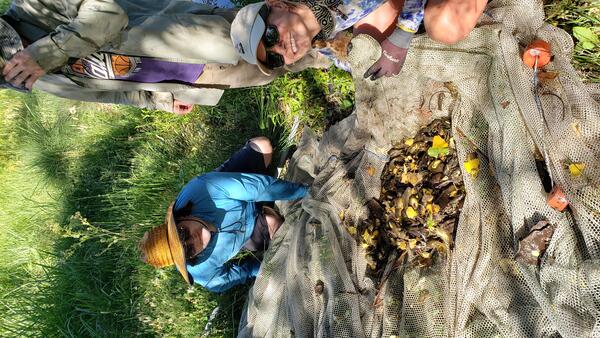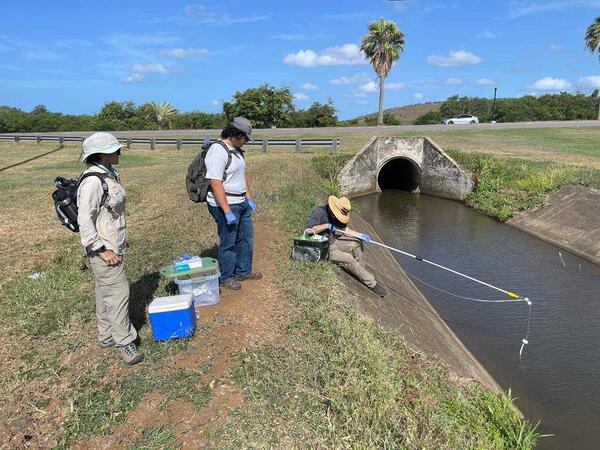Graduate students gather invasive American bullfrog tadpoles using a net
Graduate students gather invasive American bullfrog tadpoles using a netAmerican bullfrogs are causing problems for native wildlife in Arizona. These non-native frogs are a threat to native species like the Chiricahua leopard frog and northern Mexican garter snake, which are already struggling to survive. Here, graduate students gather invasive American bullfrog tadpoles using a net.
















